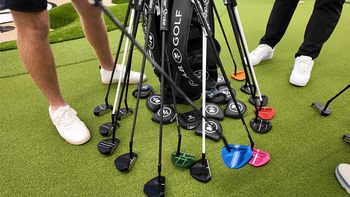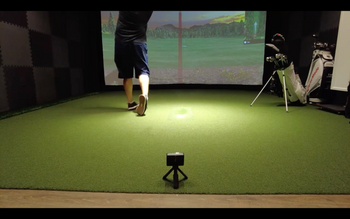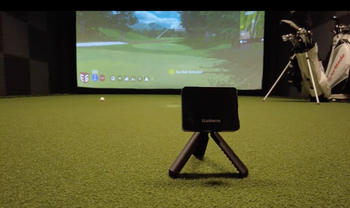Cooling towels do the trick, mainly when you use them right. They tap into what's called evaporative cooling. Here's how it works: when the moisture in the towel evaporates, it takes some heat from your skin, potentially cooling you down by as much as 30 degrees. These towels are usually made from materials like PVA or microfiber, which are great because they stay excellent for a long time without wetting your clothes.
But it's not a one-size-fits-all kind of deal. The effectiveness of cooling towels can depend a lot on the conditions around you, like the humidity and temperature, how well you've soaked and wrung out the towel, and, of course, the quality of the towel itself. While some might not meet expectations, many others do a fantastic job of giving you a quick cool-down on those scorching days or after a tough workout session.
Are you interested in finding out which cooling towel is best for you? There's plenty to consider and explore to ensure you pick the right one.
Understanding Cooling Towels

Cooling towels are pretty neat when it comes to beating the heat during a workout or any outdoor activity. How do they work? Well, they use wet evaporative cooling to cool down your skin quickly. These towels are usually made from materials like PVA or microfiber mesh that hold moisture without feeling damp. This means you can stay cool without your clothes getting soaked - pretty convenient, right?
You might be wondering how a towel can drastically lower your body temperature. Here's the deal: as the water in the towel evaporates, it pulls a significant amount of heat away from your skin. This is due to the magic of evaporative cooling, giving you that instant chill. PVA towels are especially good at this, making the cooling effect even more noticeable than with standard cotton or linen towels.
What's impressive is how effective these cooling towels are. They can reduce your skin temperature by 30 degrees and keep it that way for a few hours. This makes them a must-have for athletes, outdoor lovers, or anyone who needs a quick way to cool down under the sun or during intense physical exertion.
Cooling Towel Materials
When choosing a cooling towel, the material it's made from is critical because it directly affects how cool you feel and how comfortable the towel is against your skin. Let's dive into the top materials used in these handy products.
Starting with PVA cooling material, it's got a spongy feel that's not only comfy but also great at wicking moisture away from your body. This helps you cool down quickly as the moisture evaporates, kind of like your air conditioner wrapped around your neck. It's a lifesaver on those sweltering days.
Next up is microfiber mesh. This stuff is a game changer with its fantastic breathability and top-notch moisture-wicking abilities. It's super light, which makes it a breeze to carry around, and it activates in a snap—soak it, wring it, and give it a snap. You'll feel an instant cool as refreshing as a gentle breeze, making the sweltering heat more bearable.
Lastly, let's talk about polyester/spandex blends. These materials are excellent at using evaporative cooling technology, thanks to their stretchy nature, which allows them to cover more skin surfaces. This maximizes the cooling effect while keeping the towel snug and comfy, no matter what you're up to.
Each of these materials has its perks, so think about what you need most in a cooling towel. Whether you want the lasting chill of PVA, the featherlight touch of microfiber mesh, or the snug fit of polyester/spandex blends, a cooling towel out there is perfect for you. Keep calm and enjoy the comfort these materials offer!
Alternative Cooling Methods
If you're not a fan of cooling towels' terry cloth texture or just looking for more versatile options to stay cool, you've got plenty of other choices that are just as effective, if not more.
Consider portable gadgets like handheld fans, misting fans, and portable air conditioners. These are perfect for quick relief from the heat, especially when you're out at events or in areas without regular AC. They're easy to set up and start working immediately to cool you down.
Then, there are options like cooling vests, neck wraps, and cooling hats. These target your body's hot spots, keeping you cool without needing evaporative methods like wet towels.
Are you looking for something even simpler? Try sipping on cold water or placing cold packs on your pulse points. You'd be surprised how quickly these can lower your body temperature. Or how about a refreshing, cool shower? It's a fantastic way to reset your body's heat tolerance and keep that relaxed feeling for longer.
Don't forget about natural methods, either. A wet bandana around your neck can work wonders, similar to cooling towels, but without the same texture. Also, staying in shaded areas, using umbrellas, or wearing light, breathable clothing are easy, effective ways to beat the heat without any special gear.
Each of these methods is a brilliant alternative or complement to cooling towels, making sure you stay comfy even as the mercury rises. So next time the heat hits, remember you've got a whole arsenal of cooling tricks up your sleeve!
Frequently Asked Questions
How Instant Cooling Towels Work
Instant cooling towels work through the principle of evaporative cooling, which is the reduction of surface temperature that occurs when the evaporation of a liquid takes place. These towels are made from special performance microfiber fabric designed to absorb water and moisture, and distribute it evenly throughout the fabric.To activate an instant cooling towel, you simply wet the towel, wring it out, and then snap and swing the towel. This process allows the towel to cool down dramatically, typically around 30-35 degrees from your body temperature, which will feel very cool and refreshing. The towel will remain cool for up to two hours when wet, and the process can be repeated to continue the cooling effect
Can any House Towel be a Cooling Towel
No, not any regular house towel can be used as a cooling towel. Cooling towels are specially designed to provide a cooling effect through evaporation, and are made from specific materials that enable this. So in summary, while you could wet a house towel for some temporary relief, it will not have the same prolonged evaporative cooling abilities, portability, and features that specialized cooling towels offer. The materials and design of cooling towels are optimized for their cooling purpose.
What is the science behind cooling towels?
Cooling towels operate by utilizing evaporative cooling. This process involves the fabric of the towel being specifically crafted to absorb and hold onto water, which evaporates and cools down the temperature of your skin. When you dampen a cooling towel and wring it out, the fabric becomes damp but not completely soaked.
Conclusion
So, are cooling towels effective?
Yes, they are! These towels are crafted from materials that enhance the evaporation of heat, which genuinely helps to cool you down. Although it might seem like a complex technology, it's straightforward and effective.
Investing in a cooling towel gives you more than just clever marketing; these towels can make a difference on sweltering days or during intense exercise sessions. However, it's important to note that not all cooling towels are created equal.
The performance can vary depending on the brand and the specific materials used, so it pays to do your homework to ensure you're purchasing a top-quality product.
Stay calm and refreshed!





